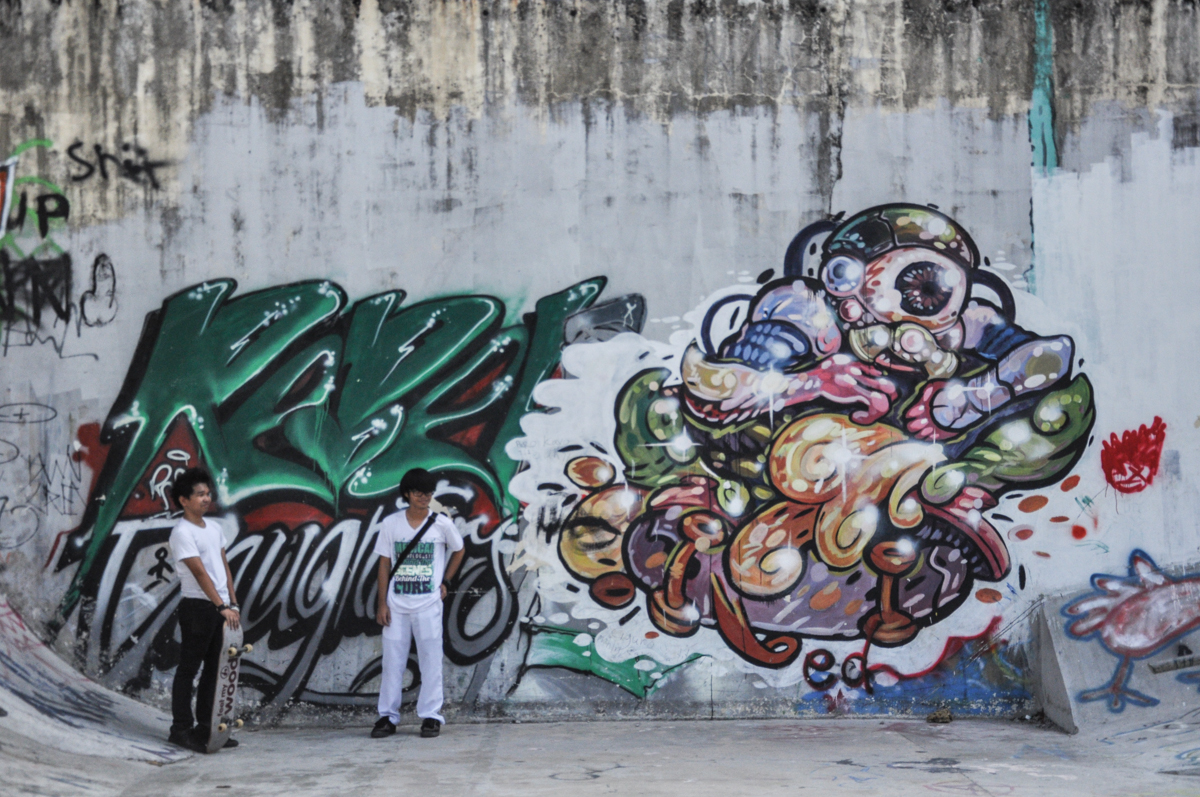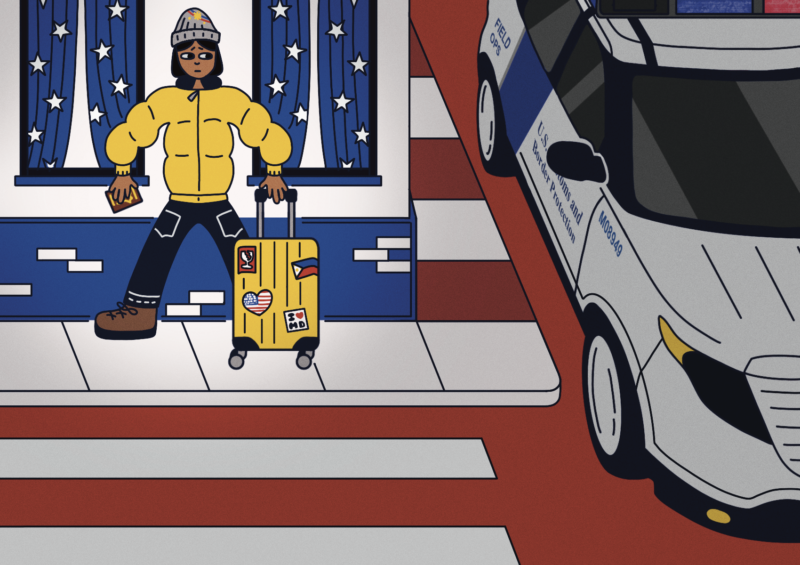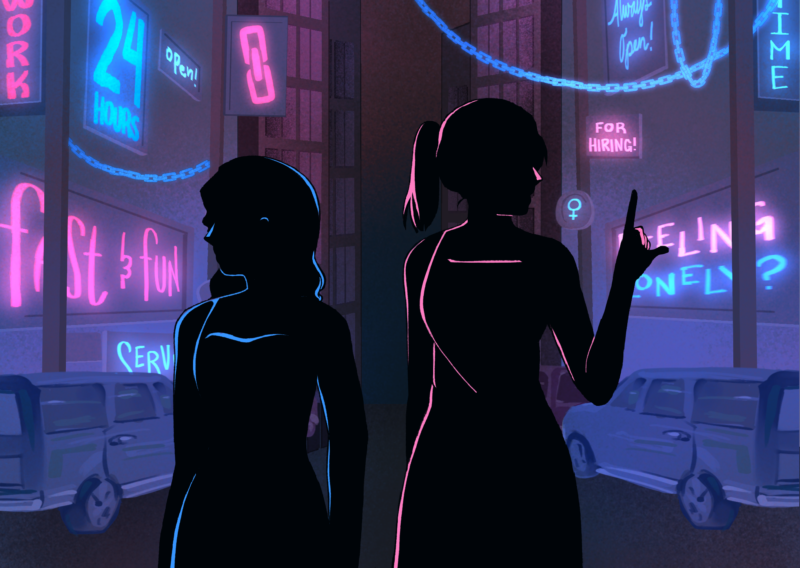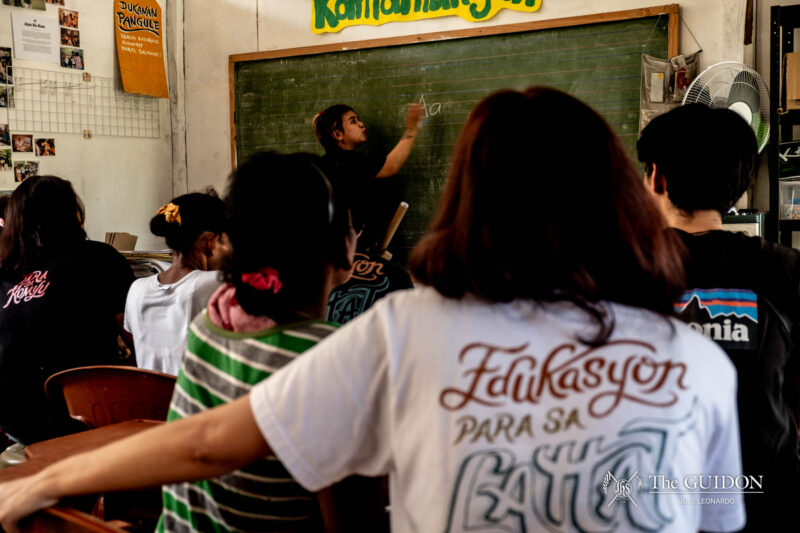From the concrete buildings to the smoggy streets, Metro Manila is a city so saturated in gray that it is easy to miss the brightly colored scenes painted on its otherwise blank walls. Some who do notice often dismiss these as works of vandalism; for most people, something can only be considered art when it is found in a museum or gallery. This notion discredits the legitimacy of street art, which has a culture older and deeper than most people may realize.
Street art takes its name from the concrete walls and subway cars that served as the canvas of many an artist in New York City in the 1960s. The objective of spreading one’s “tag” in as many places as possible continues until today, but it has also become a means of tackling social and political issues. Public opinion regarding street art has also evolved, with artists like Haze and Banksy receiving both worldwide acclaim and commercial attention.
Even though street art remains unconventional for most Ateneans, its ability to catch attention and provoke discussion is slowly but surely making it a more popular means of expression.
Street style
This style of art is the focus of Manileños, an upcoming documentary about Filipino street artists that was funded with the help of Kickstarter. Its directors, Kimberly Dryden and Austin Smith, first conceptualized the film two years ago when they were pursuing graduate degrees at Wake Forest University in North Carolina. It combines their shared love for travel and their desire to tell the stories of communities.
“Austin and I got into this on a whim,” recalls Dryden. “I was telling him that I wanted my last project in graduate school, which would become my first professional project, to focus on a young art form… He’s half Filipino and had been paying a lot of attention to art coming out of [the Philippines], so he suggested street art in Manila.” Despite not having enough money and being halfway around the world at the time, they took this half-formed idea and ran with it.
They came to the Philippines to film for six months, immersing themselves in our local street art scene in the process. “The street art and graffiti scenes in the Philippines are young relative to the rest of the world, but really vibrant and growing quickly,” shares Dryden. “Both crews and individual artists are starting to get more recognition for their work, getting more commissions from individuals, clothing brands, other companies, even governments.”
This change proves that street art is beginning to enter into the mainstream consciousness. Although there are still those who equate street art with vandalism, Dryden believes that more awareness can help quiet the naysayers. “Seeing the artists working on a big wall and taking a space that had been ugly and dirty and making it beautiful changes their perception,” she explains.
This mindset is reflected in the documentary, which focuses on how exceptional street artists are redefining the urban space by protesting against corruption and human rights abuses. For instance, Brian Barrios turned down a full scholarship to art school to serve the radical youth organization Anakbayan as a propaganda artist. Manileños also tells the story of Gerilya, a group of street artists who graduated from the University of the Philippines-Diliman College of Fine Arts; it has made a name for itself for its high-impact and sociopolitical art, mostly found along Katipunan Extension.
Vandals and vanguards
For Gabe Soriano*, a management senior and graffiti artist, people react to street art in two ways: “It’s either, ‘Tangina, ang astig nito,’ or ‘Putangina ‘tong mga vandals.’” Obviously, Soriano falls into the first category; he was introduced to street art in his sophomore year of high school due to his passion for skateboarding. From admiring “weird or whimsical” skateboard graphics, Soriano went on to collecting and making his own stickers: “I embraced the culture and I just went with it. Shit, ang saya eh.”
For newcomers, this culture may seem incredibly complex. In fact, Soriano says that “street art” and “graffiti” aren’t interchangeable terms. “We can maybe say that graffiti is more about getting out there, putting your name out, writing it on walls,” he explains, adding that he associates street art with more political purposes. The two can also be differentiated by how they are made: Graffiti is usually riskier, as the piece is done on the spot while street art can be “pre-fabricated” in a studio before being stuck to a wall.
He further expounds on graffiti, saying that it has three main forms: Tags, throw-ups and pieces. Tags and throw-ups are simpler, with the former being scribbles of the artist’s name and the latter having just an outline and two to three colors. Pieces are the most intricate, taking the most effort and time and blurring the lines between street art and graffiti.
Various crews form for different reasons; some practice a shared style, while others happen to come from the same area, like KST or Katipunan Street. They serve as support groups, especially when conflicts arise. Soriano, who is a member of AFK or Artsy Fartsy Krew, recalls how one of the most prominent fights in recent history was between graffiti artist Nuno and street art collective Ang Guerilla.
While these names are unfamiliar to most Ateneans, Soriano says in a mix of English and Filipino that their works are hiding in plain sight. “When you commute, you see their stickers on lampposts, traffic signs, rails… Sometimes, most people are caught up in their day-to-day lives that they don’t notice. Just because you can’t see it doesn’t mean it’s not there, that it’s not important.”
The future is now
“It’s an exciting time,” Dryden says of the local street art scene. “It’ll get bigger and better and more creative; it’s just a matter of who is going to push it forward and how quickly it’ll grow. There’s already a lot of artists who are exploring new angles to their work, taking it in new directions, and the results are beautiful.”
According to Soriano, the quality of street art has significantly progressed since his high school days, from simple characters and lettering to more colorful and complex styles. The availability of street art materials like spray caps and markers, previously difficult things to get a hold of locally, has perhaps played a role in these improvements.
He also cites various events, such as Wall Lords, a regional graffiti competition held among eight Asian countries, and Meeting of Styles, an international street art festival and competition coming to the Philippines in April, as positive signs of growth. While he is afraid that street art will become too commercialized, he admits that this is one concrete way of giving artists the recognition they are due.
Dryden and Smith, who returned to the country in March to finish Manileños, hope to take their documentary to various film festivals. However, they don’t intend to claim fame for themselves alone. “Eventually, it’d be great to pass the project off to someone in the Philippines, an artist who will continue to grow it,” Dryden shares. “Not that we don’t want to be involved, but because it should ultimately belong to the artists themselves.”
Now that the Philippines is on the map, an influx of international graffiti artists has begun to leave their mark on Manila as well. Dryden hopes that this trend will continue with the help of Manileños. “Americans have very narrow conceptions of Filipinos and the Philippines, or none at all because they couldn’t even locate it on a map!’ she explains. “It’s a beautiful, complicated, complex place that, because of its economic growth and political issues, will demand more attention on the global stage in the coming years. We want people to see what we think is one of the best sides of the country: The art its people produce.”
*Editor’s Note: Name has been changed at the request of the interviewee.







